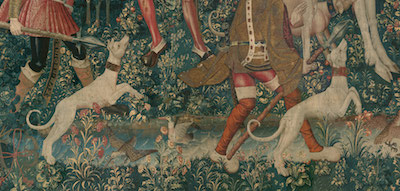Spatial
Story Map Application
A story map presents otherwise abstract spatial data in a visual and interactive way. Allowing for a clearer understanding of the physicality of the garden spaces of early modern England.
The Renaissance Gardens of Early Moderen England.

The gardens of early modern England were a reflection of the society that created them. These spaces embodied the most prominent social values: control of self and surroundings, wealth and status. Arising from the utilitarian cloister gardens of the Middle Ages, the Renaissance gardens of England displayed grandeur. Medieval monks planted cloister gardens primarily for growing healing herbs and other edible plants within the monastery walls. The gardens served the medicinal and food needs of the community while also providing a space for spiritual meditation. Like the monastery itself, cloister gardens remained enclosed and protected from the outside world. Early modern gardens of the elite provided a space for not only lavish display, but a means for conveying status, power, and even political intent.
By the early modern period, the notion of feudal land-holding had declined, giving way to private landownership. Becoming a symbol of status and wealth, gardens moved from enclosed, private spaces to open, public symbols of a landholder’s wealth and power on lavish estates. These gardens became highly manicured spaces that drew their inspiration from the popularized trends coming out of Italy and France. As ideas within early modern garden theory developed these exterior spaces grew in complexity and social importance, reflecting the homes that they surrounded and displaying the sensibilities and even ambitions of the family within.
Creating Nirvana: The Renaissance Gardens of early modern England
Story Map Application
A story map presents otherwise abstract spatial data in a visual and interactive way. Allowing for a clearer understanding of the physicality of the garden spaces of early modern England.
Voyant Tools
In this section Voyant Tool are used to analyze a corpus of primary source data. The verity of interactive Voyant Tools allows for a deeper, more creative understanding, of complete text.
Gallery
The photo gallery is a visual reiteration of the written information that encompasses it. The gallery contains primary and secondary source imagery including the Renaissance gardens of England and their features, as well as their Italian and French influences.
Ball State University, Department of History